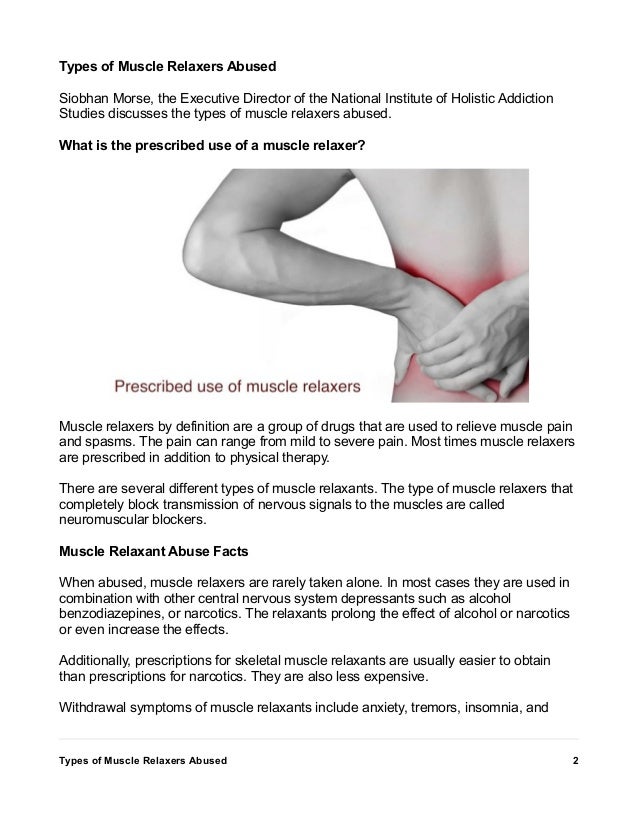


Here are some suggestions to naturally relax your muscles through movement: Ideally, movement would be best combined with one of the other muscle relaxers mentioned here. That makes movement a critical aspect of relaxing your muscles. Combined with shortened muscles, this is a surefire way to experience muscle pain and tension. Studies also suggest that if you’re too sedentary (inactive) that you can experience more inflammation ( 24). So when you do want to use those shortened muscles, they will feel tight, painful, and achy. If you stay in these positions for too long, it can cause your muscles to favor that shortened state-it becomes their new norm. Movement is important because when you’re sitting or lying, your muscles are in a shortened state. Of course, you want to avoid any movements that may irritate your muscles even further. When people are in pain, they naturally want to take it easy.īut as long as your pain isn’t severe, you should be involving yourself in some form of exercise or gentle movement. Like magnesium and vitamin D deficiencies, movement is easy to overlook. When it comes to the temporary relief of pain, turmeric is the clear winner here. Scientists have also discovered that curcumin can help reduce pain and muscle soreness after physical activity ( 16, 17). In fact, studies have found that the active ingredient in turmeric, curcumin, is more effective than aspirin and ibuprofen for reducing inflammation ( 15).īut it doesn’t end there. The good news is, studies suggest that turmeric powder holds some of the same anti-inflammatory and pain-killing power as NSAIDS. And the more you take NSAIDs, the more likely you are to experience issues. They can increase the risk of heart failure, negatively alter your gut’s microbiome, and even reduce the efficiency of your kidneys ( 12, 13, 14). NSAIDs can cause a wide range of undesirable side effects. NSAIDs can effectively help ease painful muscles because they both reduce inflammation and pain. I know I’ve certainly taken my share of NSAIDs to relieve a tight back or headache. Have you ever taken ibuprofen, aspirin, or some other anti-inflammatory drug (NSAID) to alleviate your muscle pain? That way, you can wake up well-rested with no muscle pain or tension. Since CBD oil can make you relaxed and sleepy, it’s best used at night. Which is great for relieving tense muscles since anxiety and stress can cause your muscles to tighten. There’s also evidence that CBD oil can relieve anxiety and improve your sleep ( 7). Both of which are key when it comes to getting your muscles to relax. This means CBD oil can effectively reduce pain and chronic inflammation. Now that you know CBD oil won’t time warp you to the Woodstock Music and Arts fair, we can move onto how CBD oil benefits you.ĬBD oil serve’s as what’s called an allosteric modulator of your opioid receptors ( 6). And I can already imagine what you’re thinking… “But won’t this make me high and isn’t it illegal?”ĬBD oil doesn’t have any THC, the compound in cannabis that gives its infamous snack-binging “high.” Since CBD oil has no THC, it’s also completely legal. It's something that your physician should carefully consider when prescribing those types of drugs together.CBD oil is derived from the flowers of cannabis plants. The additive effect in causing sedation can be a problem.

Pain medications in combination with other drugs that are not pain medications, the primary concern there is sedation, and that is drowsiness effects from combining such medications as pain relievers in the opiod categories such as morphine or Percocet-type drugs with other drugs such as anti-anxiety drugs, muscle relaxants, and other medications that also have sedating properties such as anti-convulsant drugs. Those combinations are very effective in controlling pain and using two such medications together often maximizes pain relief for a given person.
Imuscle relaxwes additive plus#
— - Question: Is It Safe To Combine Pain Medicine With Other Medications?Īnswer: Combinations of medications are often a good thing when it comes to controlling pain, and commonly physicians will prescribe combinations of medication such as anti-inflammatory drugs plus opiod drugs such as hydrocodone or Vicodin, as an example.


 0 kommentar(er)
0 kommentar(er)
